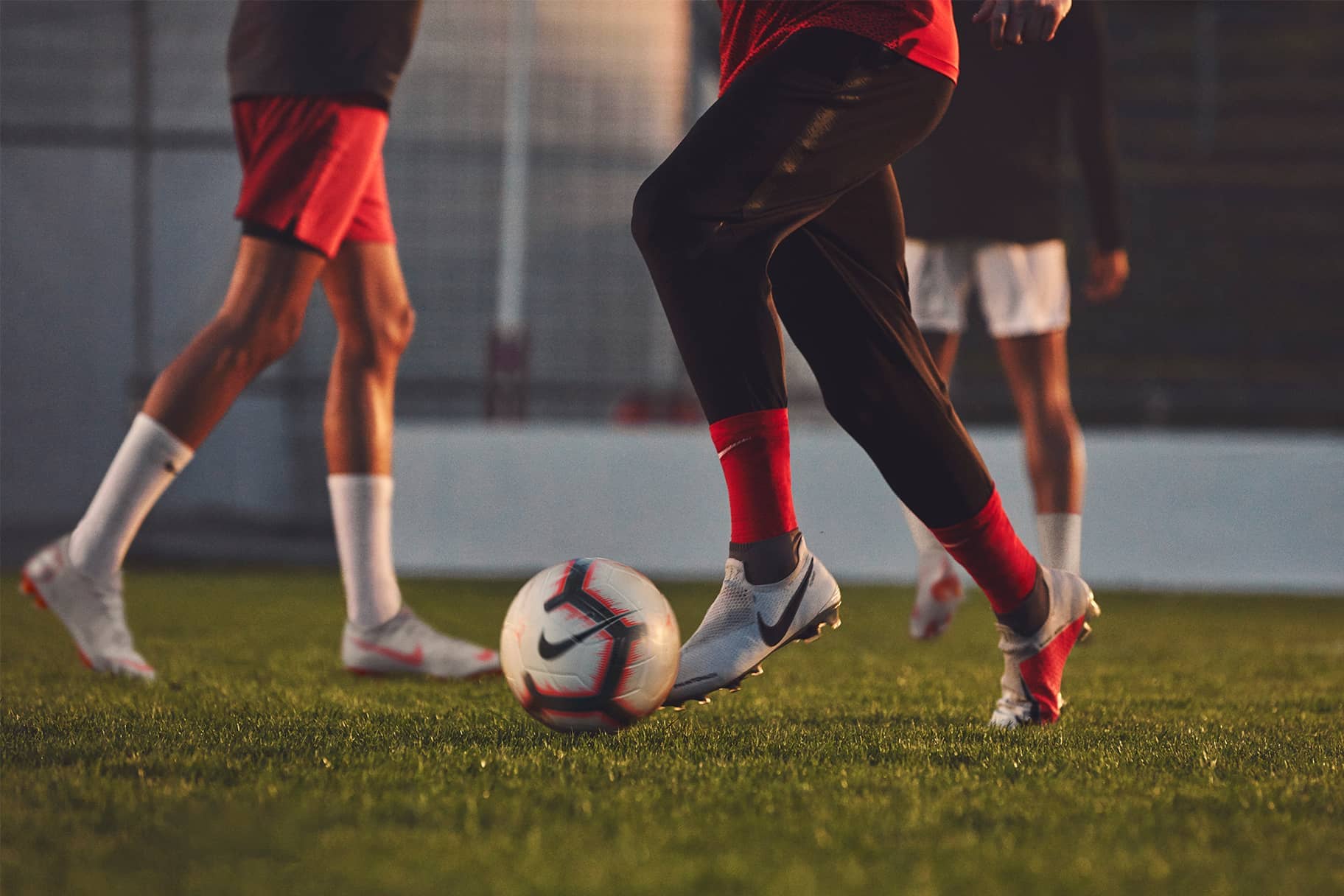The Most Common Soccer Injuries, Explained
Sports & Activity
Physical therapists explain six common soccer injuries that can occur on the field.

Soccer injuries can be encountered no matter the playing level, from beginners to the pros. But what are the most common soccer injuries and what do they mean? Here’s a breakdown of what you need to know, explained by physical therapists.
Why do soccer injuries happen?
There’s a range of potential injuries in soccer, but many of them happen because of the nature of the sport, Ellen Isaac, D.P.T., said.
“Because soccer is a contact sport, I’d say a large percentage of injuries on the field are due to collisions,” she said. “Running at high speeds with quick changes in direction can lead to things like ACL ruptures, while inadequate warm-ups can lead to things like hamstring strains.”
Soccer is also a fast-moving sport and that, combined with the high likelihood of collisions raises the risk of injury, Carol Mack, D.P.T., said.
But it’s not just collisions that can lead to injury on the soccer field.
“Injuries during sport can happen from improper warm-up, poor mechanics, or faulty execution and muscle weakness,” André Williams, D.P.T, said. It’s just with soccer, “you have the added risk of contact injuries,” he added.
What are the most common soccer injuries?
There are lot of different injuries you can get on the soccer field, but physical therapists say these are the most common:
1.Ankle sprain
An ankle sprain describes the stretching or tearing of the ankle’s ligaments, the tough bands of fibrous tissue that connect two bones together in your joints. “This can happen when landing from a jump after heading a ball or when involved with a slide tackle,” Mack said. Even tripping on the field can lead to an ankle sprain, Williams said.
Treatment usually involves immobilizing your ankle with a brace, Mack said, along with ankle strengthening and rehab once the initial injury has healed. In more severe cases, someone may need to use crutches, she said. But, “depending on the grade of the sprain, it’s possible the athlete won’t have to take any days off entirely, but they may need to avoid [physical]contact for a few days,” Isaac said.
2.Calf strain
A calf strain is a stretched or torn muscle or tendon in the calf. Strains can happen suddenly or develop over time, and tend to cause symptoms like pain, muscle spasms, swelling, and trouble moving the muscles. Calf strains tend to happen due to “inadequate warm-up,” Isaac said, but getting older and having a history of calf strains can increase your risk.
Recovery from a calf strain largely depends on how severe it was, Isaac said, adding, “it can be as little as four to five days and as much as 45 days.” Treatment usually includes “rest from sprinting or other explosive movements” and rehab to strengthen the injured muscle, Mack said.3.Foot fracture
A foot fracture is a partial or complete break in one of the bones of the feet, according to Cedars-Sinai Medical Center. “This can be from overuse, like a stress fracture, or traumatic, like someone stepping on your foot or landing from a jump in a less-than-optimal position,” Williams said. Treatment involves “some sort of decreased weight-bearing for a period time” and possibly even surgery, he said. After that, Williams said, someone will need rehabilitation to restore flexibility, mobility, and strength before getting back on the field.
4.Kneecap bursitis
Kneecap bursitis is a painful condition that impacts the bursae, the small, fluid-filled sacs that cushion the bones around the kneecap, the Mayo Clinic explained. This “can occur from the constant stopping and starting that players have to do on the field,” Mack said. Treatment usually requires rest, ice, compression, and elevation, Isaac said, along with physical therapy treatments like soft tissue massage and strengthening. “Compression sleeves can be used to help with swelling,” she said. And, in some situations, a doctor may need to extract excess fluid.
5.Knee sprain
“There are a handful of ligaments in the knee that can be sprained, and the mechanism of injury to each ligament is a little different,” Isaac said. “The ACL is most commonly injured by a sudden twisting motion with a planted foot, while the MCL, PCL, and LCL are most commonly injured due to a direct blow to the outside, back, or inside of the knee, respectively.” And treatment wildly varies depending on how severe the sprain is, she added.
For more minor injuries, rest, ice, compression, and elevation may help, she said. But, for more severe injuries, surgery may be needed. Eventually, a person would progress to physical therapy, where they work on regaining strength and agility, Isaac said.
(Related: Should You Try an Ice Bath for Post-Workout Recovery?)
6.Clavicle fracture
The clavicle, otherwise known as the collarbone, is the bone that connects the breastplate to the shoulder, according to the American Academy of Orthopaedic Surgeons. This fracture “is a traumatic injury, whether by fall or a very targeted blow to the clavicle region,” Williams said. Treatment focuses on immobilizing the area with a splint and sometimes surgery is needed, Mack said. The goal through treatment, Williams said, is to restore range of motion and strengthen the arm.
How to Lower Your Risk of Injury in Soccer
The best way to lower your risk of injury while playing soccer is to do proper strength training and conditioning, Williams said. “Do the mobility work, the stretching, and nutrition — the small things that make a big difference,” he said.
(Related: Dietitian-Approved, High-Protein Snacks to Eat After a Workout)
Strength training is “very important” for soccer and “may lower the risk of injuries,” Mack said. She adds, “both upper- and lower-body strength is important, as well as core training and balance training.”
Williams also suggests that you “practice like you play, sharpen your skills, and practice new moves and how to address situations, so that when you are on the field in play, you are not trying something for the first time.”
Words by Korin Miller
